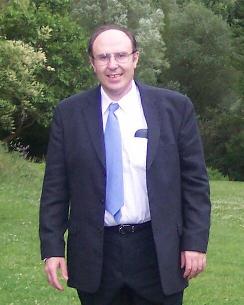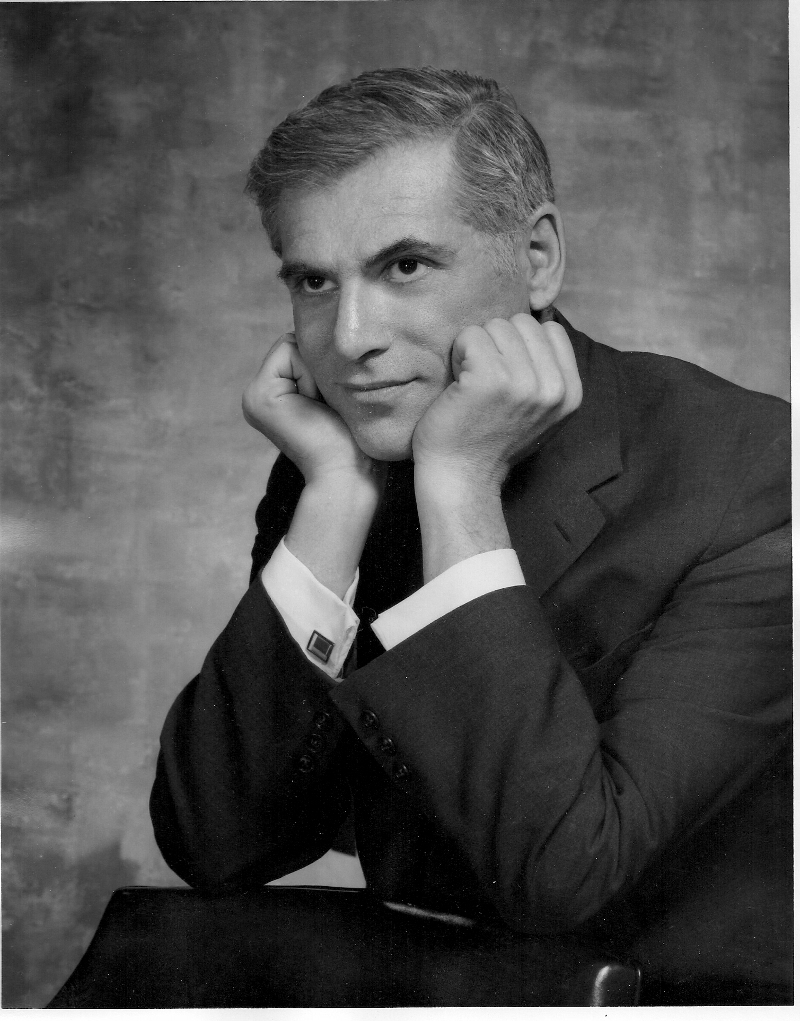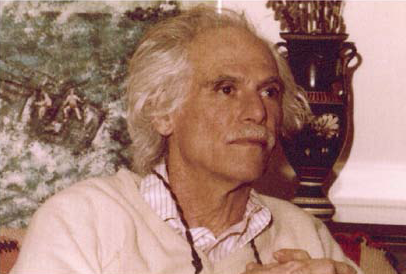|
|
|
Miguel Angel Arcones, 46, Professor of Mathematical Sciences at Binghamton University, died on December 30, 2009, after a long battle with cancer. A native of Segovia, Spain, Arcones began his graduate studies in the US in 1987 and earned his PhD in 1991 from the CUNY, working with Evarist Giné. After several postdoctoral appointments, Miguel joined the faculty of Binghamton University in 1998. In spite of periods of illness and hospitalization, he carried out his duties as a teacher and scholar with determination and grace, and he distinguished himself in both. He was well known for the depth and breadth of his research and was an elected member of the ISI and a Fellow of the IMS. He was highly appreciated by his students for his passion for the discipline and for his devotion to their learning. While serving as a Wylie Instructor at the University of Utah early in his career, he received an outstanding instructor award. Later, he enthusiastically served as the faculty mentor of the Mathematics Club at Binghamton University. He was the driving force behind the establishment of a thriving actuarial degree program at BU.
Miguel’s research interests and achievements were impressive, both broad in range and marked by conceptual and technical sophistication. His work in Probability Theory includes notable contributions to the theory of U-processes, limit theory under dependence conditions and large deviations theory. Particularly influential were his series of papers published in 1993-4 on the asymptotic theory of U processes, his celebrated 1994 paper on the limit distribution of functionals of stationary sequences of Gaussian vectors and his definitive treatment, in 2003-4, of the large deviation principle for stochastic processes. His work in Mathematical Statistics was equally broad, including contributions to bootstrap theory, the asymptotics of UStatistics and M-estimators, the Bahadur-Kiefer representation in a wide array of statistical contexts and order-restricted inference in Reliability. His contributions to the theory of U-statistics, beginning with his 1992 Annals of Statistics paper on bootstrapping U-Statistics, and including subsequent papers on large deviations, inequalities, the LLN, the CLT and the LIL for U-Statistics, were especially notable. He also wrote a diverse stream of research papers on M-estimator asymptotics. His contributions to reliability were focused on constrained estimation of a survival function. His work on estimation under a uniform stochastic ordering constraint appeared in the AoS in 2000, and his work on estimation under a “stochastic precedence” constraint was published in JASA in 2002.
 |
| Miguel Angel Arcones |
For seven years, Miguel served as an Associate Editor for JASA’s Theory and Methods Section. The Editors he served for will readily attest to the outstanding service he rendered in this capacity. His AE reports were, without exception, timely and thorough, always containing insightful commentary on the reviews he commissioned and always including an independent analysis that added value. Additional evidence of the generosity of his professional service is the fact that he published over 130 articles in Mathematical Reviews. He was the founding Editor of the International Journal of Statistics and Management Systems and nurtured the fledgling journal for its first four years. His high standards and breadth of expertise are readily apparent from the volumes of the IJSMS that he saw through to publication. He passed away just weeks after having participated in the search for his replacement.
Miguel Arcones was a gentle giant in the statistical sciences, shy and sometimes unnoticeable in social settings, yet animated, stimulating and highly creative in his professional interactions. To his research visitors, he was a warm and gracious host. His colleagues and collaborators will not soon forget his generous nature, the excitement that he felt and shared when thinking about research questions, his sense of humor and hearty laugh and the friendship that he offered so fully and sincerely. His premature passing is a great loss to our discipline. While his work will continue to influence students and researchers in Probability and Statistics for years to come, the role he played in the lives of his friends, students, colleagues and collaborators is irreplaceable. He is a man who left a strong positive imprint, both personally and professionally. May he rest in peace.
E. Giné, D. Mason, F. Samaniego and A. Schick
Lester E. Dubins, a distinguished probabilist and Professor Emeritus of Mathematics and Statistics at UC Berkeley, passed away peacefully in his home on February 11, 2010. He is survived by his son Benjamin, his sister Blanche, his nephews Aaron, Mathew, Michael and Ross and his nieces Marylyn and Sarah.
 |
| Lester Eli Dubins |
Lester grew up in New York City. His college education was interrupted by World War II in which he served as an Air Force officer stationed at a radar installation in Iceland. After the war, in the late 1940s, Lester continued working (as a civilian) for the radar research & development branch of the US Air Force. In 1951 he resumed his studies as a graduate student of mathematics at the University of Chicago where he obtained his Ph.D. degree in 1955 submitting a thesis on Generalized Random Variables under the guidance of Irving E. Segal. In those days Chicago's mathematics department was fortunate to have an excellent cohort of graduate students, among them Paul Cohen, Don Ornstein and Jack Feldman.
After a year at the Princeton Institute for Advanced Study and a few years at Carnegie Institute of Technology in Pittsburgh, Lester joined the Mathematics and Statistics departments at UC Berkeley in 1962, where he remained for the rest of his life. Lester was forced to retire at 70, shortly before the abolition of mandatory retirement age in public institutions in the USA went into effect. He challenged the university, won his case in court and was reappointed. He then continued teaching until retiring in 2004 by his own volition.
While still in Chicago, Lester met Jimmie Savage (then on the mathematics faculty there) and surprised him by showing that bold play is not uniquely optimal in classical Red & Black (roulette). Jimmie was impressed and invited Lester to join him in trying to better understand the probabilistic structure of gambling situations. This encounter developed into a collaboration generating several key papers and culminating (in 1965) in the ground-breaking monograph How to Gamble if You Must (Inequalities for Stochastic Processes) which presented a coherent mathematical theory of gambling processes and optimal behavior in gambling situations, pointing out their relevance to traditional approaches to probability. In consultation with Bruno de Finetti and under his influence, Dubins and Savage presented their theory in the finitely additive framework in order to bypass measurability technicalities inherent in maximizing an uncountable set of functions in searching for optimal strategies. Lester paid tribute to Jimmie Savage - to his remarkable intellect and scholarship, and to their mutual friendship - in a beautifully phrased preface to the Dover edition of the book which appeared in 1976, five years after Jimmie's untimely death at the age of 54.
Lester continued to contribute to finitely additive probability throughout his entire career. As late as 1999 he published a paper entitled Paths of Finitely Additive Brownian Motion need not be Bizarre, demonstrating that those paths can be, for example, continuous piecewise linear or piecewise polynomial functions, etc. Not unrelated to his fondness of finite additivity, was Lester's great admiration for Bruno de Finetti and his firm belief in the subjective nature of probability according to which probabilities should not be thought to be inherent in objects, but instead in one’s ideas and expectations about those objects.
 |
| Lester Eli Dubins |
Although primarily a probabilist, Lester had deep interest in mathematics in general. Thus scattered among his close to 100 publications (the latest of which appeared in 2009) are papers on a variety of mathematical themes, such as curves of minimal length (under some constraints), Tarski's Circle Squaring problem, convex analysis and geometry.
Lester was an unconventional teacher. He seemed unable to bore himself and his audience by a systematic recitation of a textbook. Even the most elementary material would receive a fresh and original treatment under his hands. In teaching as in research, Lester would never be satisfied with just having a logically correct proof of a statement, but would always strive for a natural, simplest possible argument. He was at his best in advanced graduate seminars and informal discussions. In front of small groups of colleagues, international visitors and graduate students he challenged his audience, exposed and explored his own thoughts and still-evolving ideas, and inspired them with unexpected basic questions and insights. He would often open a session asking if anyone had anything interesting to tell the class, and his seminars were fascinating Socratic dialogues that continued informally between regular sessions.
As much as he lived for mathematics, Lester also cared deeply about people, especially his students and friends, who came from all walks of life. He was always a champion of the underdog, whether they were California farmworkers or oppressed people anywhere, and was an outspoken advocate of civil liberties. He loved words and stories and humor, and led a vigorous life, traveling and hiking and mountain-biking into his eighties, roaring with laughter or immersed in explorations of mathematical subtleties as he went. He was a person of the highest integrity in everything he did, scientifically and socially, and did not bend to political or peer pressures. You did not ask Lester how he liked the restaurant you were in or how good a logical argument was, unless you were prepared for the polite but unadulterated truth. For those of us who were fortunate enough to know him well, hardly a day passes when we do not ask ourselves “What would Dubins have done in this situation?” or “What would Lester have said?” Lester Dubins was the quintessential maverick mathematician, and above all, an absolute gentleman and scholar.
David Gilat, Ted Hill, Bill Sudderth